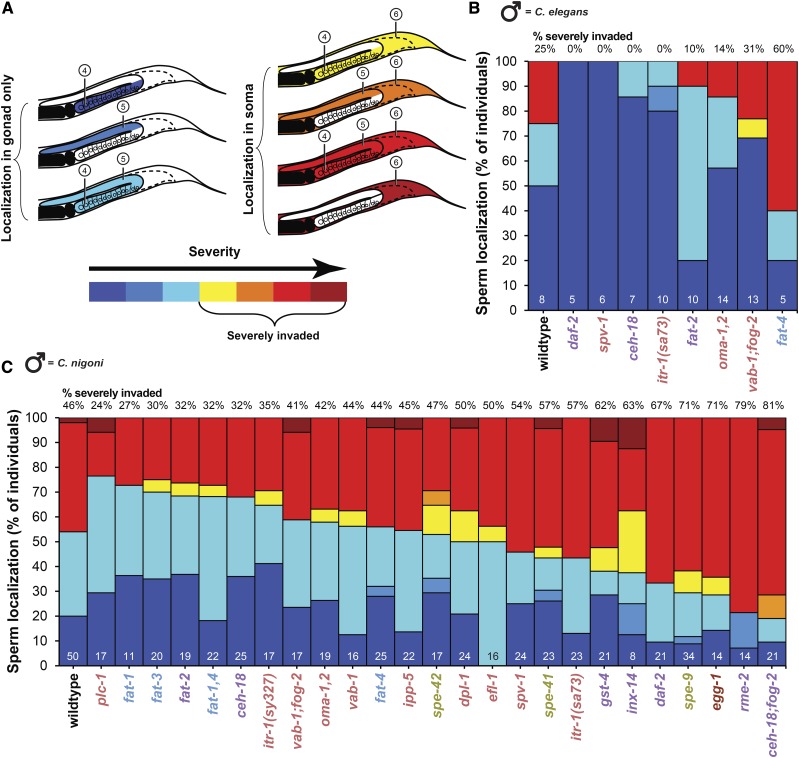Figure 2.
Sperm mislocalization in ectopic regions of C. elegans hermaphrodites. (A) Severity of sperm mislocalization was characterized for combinations of distinct ectopic regions, including the proximal and distal gonad arms as well as somatic zones of the hermaphrodite body outside of the reproductive tract altogether (see Figure 1). Individuals were considered ‘severely invaded’ when sperm was found in the soma and at least one other ectopic region. (B) Stacked bars indicate for eight different gene mutants the cumulative percentage of individual hermaphrodites with conspecific C. elegans male sperm mislocalized into the different ectopic regions. The other 17 mutant strains had fewer than five individuals with conspecific ectopic sperm, and were excluded from severity analysis. (C) Cumulative percentage of individual hermaphrodites with heterospecific C. nigoni male sperm mislocalized into the different ectopic regions of C. elegans hermaphrodites varies significantly across mutant genotypes (χ2 = 67.97, df = 25, P < 0.0001). Numbers above each bar in (B) and (C) indicate the percentage of severely invaded individuals among those with non-zero incidence of ectopic sperm. Numbers at the bottom of bars in (B) and (C) indicate sample size of individuals with ectopic sperm that allowed calculation of severity. Post-hoc statistical comparisons to wildtype identified no individual mutants after multiple test correction despite significant overall differences across strains (Dunnett’s test α = 0.05). Mutant strain names are colored to indicate functional phenotypic effects as in Figure 1. Sperm localization for non-ectopic regions is shown in Supplementary Figure S2.

